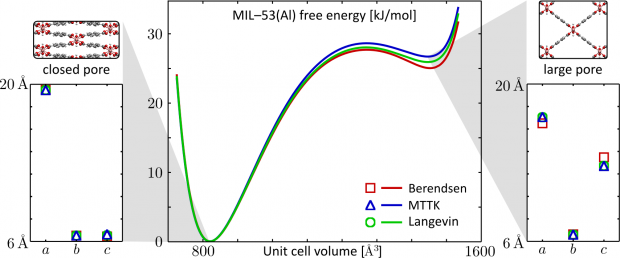A comparison of barostats for the mechanical characterization of metal-organic frameworks

Abstract
In this paper, three barostat coupling schemes for pressure control, which are commonly used in molecular dynamics simulations, are critically compared to characterise the rigid MOF-5 and the flexible MIL-53(Al) metal-organic frameworks. We investigate the performance of the three barostats, the Berendsen, the Martyna-Tuckerman-Tobias-Klein (MTTK) and the Langevin coupling methods, in reproducing the cell parameters and the pressure versus volume behaviour in isothermal-isobaric simulations. A thermodynamic integration method is used to construct the free energy profiles as a function of volume at finite temperature. It is observed that the aforementioned static properties are well reproduced with the three barostats. However, for static properties depending nonlinearly on the pressure, the Berendsen barostat might give deviating results as it suppresses pressure fluctuations more drastically. Finally, dynamic properties, which are directly related to the fluctuations of the cell, such as the time to transition from the large-pore to the closed-pore phase, cannot be well reproduced by any of the coupling schemes.

 Open Access version available at
Open Access version available at